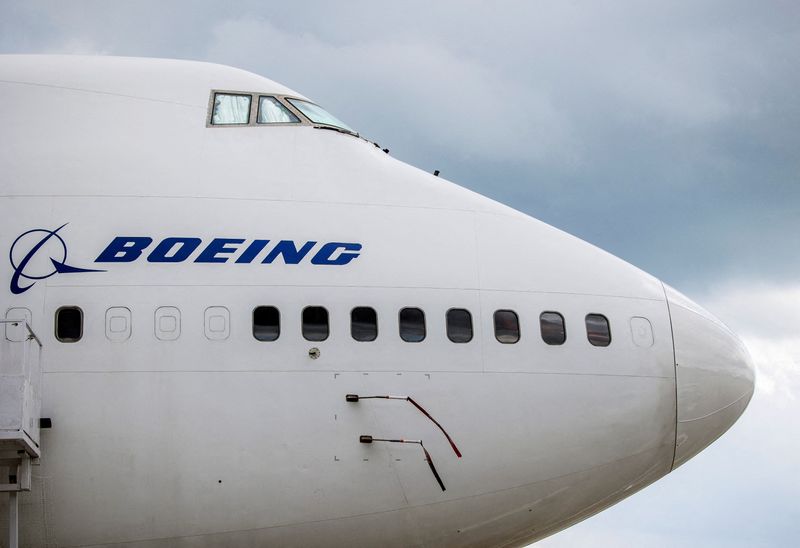By Valerie Insinna
PARIS (Reuters) – U.S. planemaker Boeing slightly raised its annual 20-year forecast for new jetliner deliveries, propelled by the strength of the narrowbody market fueled by demand from low-cost carriers.
Boeing expects airlines will need to buy 42,595 jets from now until 2042, up from 41,170 planes in its previous 20-year forecast last year.
The latest projection — released on Sunday ahead of the Paris Airshow — is still lower than the 43,610 new jets that were predicted as part of the market outlook in 2021, when Russian aircraft demand was factored in.
Boeing expects that narrowbody jets like its 737 MAX or the A320neo family made by European rival Airbus will dominate aircraft deliveries, with 32,420 single-aisle jets delivered through 2042.
That demand will be driven by low-cost carriers, which are slated to double the size of their current fleets, said Darren Hulst, Boeing’s vice president of commercial marketing, during a briefing with reporters ahead of the report’s release.
Deliveries from now until 2042 are also expected to include 7,440 widebody planes, 1,810 regional jets and 925 freighters. About half of new jet deliveries will replace older models, while the other half will grow airlines’ fleets, Boeing predicts.
“The end of the recovery has played out largely as we’ve expected, with a few different nuances and dynamics,” such as a reduction in demand for regional jets compared to last year as interest in narrowbody planes grows, Hulst said.
Boeing expects the global aircraft fleet to almost double over the next 20 years, from about 24,500 jets in 2022 to 48,600 by 2042. Last year’s outlook predicted a global fleet of 43,470 aircraft in 2041.
The company also raised its industrywide passenger traffic forecast growth rate slightly from 3.8% to 4%. And while the air cargo market is taking “a little bit of a breather,” the estimated 3% annual growth in trade over the next 20 years will provide a tailwind for future demand, Hulst said.
“I think we’ll again see how resilient the demand for air cargo is because it’s consistently around 3.5% to 4% growth,” he said.
Although Chinese air traffic remained depressed in 2022, Hulst said Boeing remains “very bullish” on China, which will make up 20% of the market, with the rest of Asia making up another 22% of demand.
Airbus, which published its own market forecast on Wednesday, also raised its delivery projections, estimating that 40,850 new jets would be handed over to customers through 2042.
(Reporting by Valerie Insinna; editing by Jonathan Oatis)
